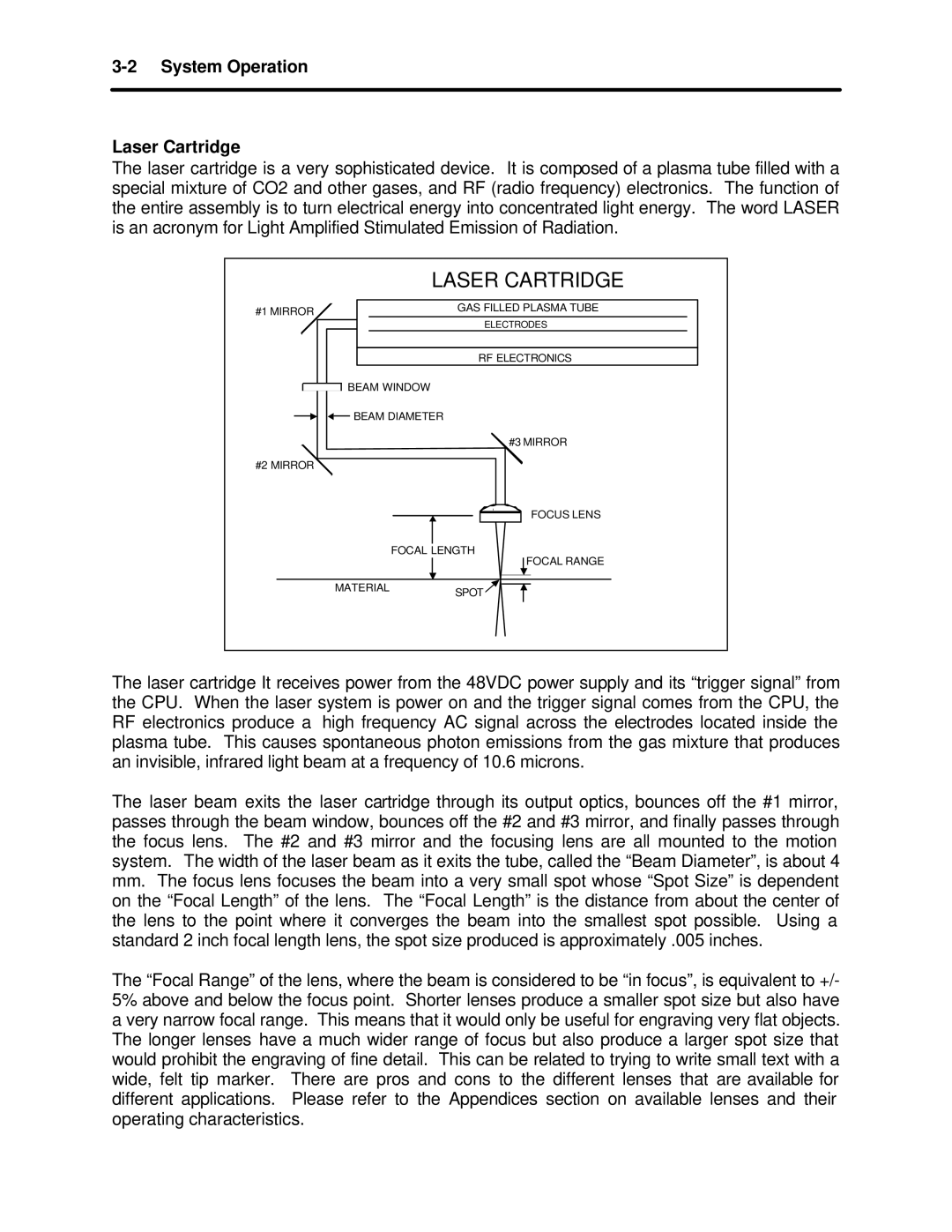
3-2 System Operation
Laser Cartridge
The laser cartridge is a very sophisticated device. It is composed of a plasma tube filled with a special mixture of CO2 and other gases, and RF (radio frequency) electronics. The function of the entire assembly is to turn electrical energy into concentrated light energy. The word LASER is an acronym for Light Amplified Stimulated Emission of Radiation.
|
| LASER CARTRIDGE | |
|
|
|
|
#1 MIRROR |
| GAS FILLED PLASMA TUBE | |
|
|
| |
|
| ELECTRODES |
|
RF ELECTRONICS
![]()
![]() BEAM WINDOW
BEAM WINDOW
![]() BEAM DIAMETER
BEAM DIAMETER
#3 MIRROR
#2 MIRROR
FOCUS LENS
FOCAL LENGTH
![]() FOCAL RANGE
FOCAL RANGE
MATERIALSPOT![]()
The laser cartridge It receives power from the 48VDC power supply and its “trigger signal” from the CPU. When the laser system is power on and the trigger signal comes from the CPU, the RF electronics produce a high frequency AC signal across the electrodes located inside the plasma tube. This causes spontaneous photon emissions from the gas mixture that produces an invisible, infrared light beam at a frequency of 10.6 microns.
The laser beam exits the laser cartridge through its output optics, bounces off the #1 mirror, passes through the beam window, bounces off the #2 and #3 mirror, and finally passes through the focus lens. The #2 and #3 mirror and the focusing lens are all mounted to the motion system. The width of the laser beam as it exits the tube, called the “Beam Diameter”, is about 4
mm.The focus lens focuses the beam into a very small spot whose “Spot Size” is dependent on the “Focal Length” of the lens. The “Focal Length” is the distance from about the center of the lens to the point where it converges the beam into the smallest spot possible. Using a standard 2 inch focal length lens, the spot size produced is approximately .005 inches.
The “Focal Range” of the lens, where the beam is considered to be “in focus”, is equivalent to +/- 5% above and below the focus point. Shorter lenses produce a smaller spot size but also have a very narrow focal range. This means that it would only be useful for engraving very flat objects. The longer lenses have a much wider range of focus but also produce a larger spot size that would prohibit the engraving of fine detail. This can be related to trying to write small text with a wide, felt tip marker. There are pros and cons to the different lenses that are available for different applications. Please refer to the Appendices section on available lenses and their operating characteristics.
